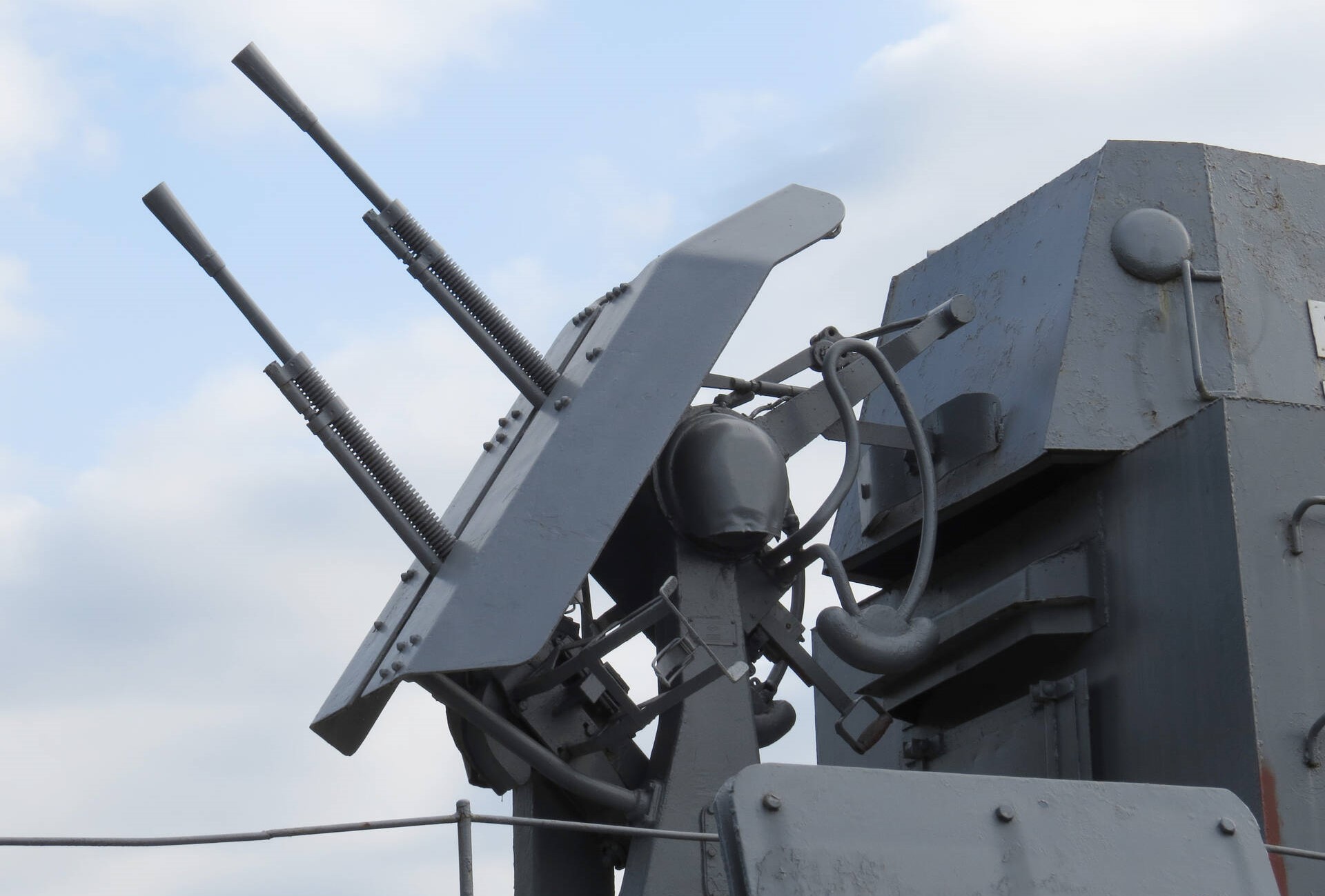
The world of weapons is vast and compelling, and one category that has played a pivotal role in military history is antiaircraft guns. These formidable weapons are designed to shoot down airborne threats, providing protection against enemy aircraft. From their early development during World War I to the advanced systems employed in modern warfare, antiaircraft guns have evolved significantly to adapt to changing aerial threats.
In this article, we will delve into fascinating facts about antiaircraft guns that illustrate their importance and impact on military operations. From their role in defending against enemy attacks to their technological advancements, we will explore the rich history and intricacies of these powerful guns. So, let’s embark on a journey and discover seventeen intriguing facts about antiaircraft guns.
Key Takeaways:
- Antiaircraft guns are versatile weapons that can defend against enemy aircraft, drones, and missiles. They have rapid-fire capabilities and are crucial for air defense networks.
- These guns have played a significant role in history and continue to evolve with advanced technology, making them vital for air superiority and international defense strategies.
A versatile weapon system
The antiaircraft gun is a highly versatile weapon system designed to defend against aerial threats. It is capable of engaging enemy aircraft, drones, and missiles.
Different types of antiaircraft guns
There are various types of antiaircraft guns, including the 20mm Vulcan Gatling gun, the 40mm Bofors gun, and the 88mm Flak gun.
Effective range
Antiaircraft guns have an effective range of several kilometers, allowing them to engage targets at a distance.
Rapid-fire capabilities
Antiaircraft guns are known for their rapid-fire capabilities, with some models able to fire hundreds of rounds per minute.
Mobile defense
Antiaircraft guns can be mounted on various platforms, including trucks, tanks, and naval vessels, providing mobile defense capabilities.
Radar-guided systems
Modern antiaircraft guns often utilize radar-guided systems to track and engage targets, enhancing their accuracy and effectiveness.
Ammo types
Antiaircraft guns use specialized ammunition, such as high-explosive shells, armor-piercing rounds, and proximity fuses.
Anti-missile defense
Antiaircraft guns are a crucial component of anti-missile defense systems, capable of intercepting and destroying incoming missiles.
Coordination with air defense networks
The operation of antiaircraft guns is often integrated into larger air defense networks, utilizing radar and communication systems for effective coordination.
Countermeasures
Modern antiaircraft guns are equipped with countermeasures, such as chaff and flare dispensers, to confuse and deter incoming threats.
Training and expertise
The operation of antiaircraft guns requires specialized training and expertise to ensure effective target engagement and minimize collateral damage.
Historical significance
Antiaircraft guns have played a significant role in various conflicts throughout history, providing crucial defense against enemy air attacks.
Interceptor capabilities
Some antiaircraft guns are equipped with advanced systems that allow them to intercept and destroy incoming projectiles with precision.
Continuous advancements
The technology surrounding antiaircraft guns continues to evolve, with ongoing advancements in areas such as targeting systems and ammunition effectiveness.
International use
Antiaircraft guns are utilized by military forces around the world, showcasing their importance in modern defense strategies.
Collaborative defense systems
Many countries have developed collaborative defense systems, linking antiaircraft guns with other air defense assets for comprehensive protection.
Vital component of air superiority
Antiaircraft guns are a vital component of air superiority, providing a layered defense against airborne threats and ensuring the safety of friendly forces.
These are just 17 of the many fascinating facts about antiaircraft guns. Their versatility, rapid-fire capabilities, and role in modern defense systems make them an essential asset for military forces around the world.
Conclusion
In conclusion, antiaircraft guns play a crucial role in modern warfare, providing effective defense against aerial threats. These powerful weapons have evolved greatly over time, from basic manual guns to advanced automated systems. They possess incredible accuracy, firepower, and range, making them a formidable deterrent against enemy aircraft.Antiaircraft guns require skilled operators who undergo extensive training to ensure precise targeting and efficient operation. These weapons utilize a variety of ammunition types, including explosive shells and guided missiles, to neutralize airborne threats. Additionally, advancements in technology have resulted in the development of sophisticated radar systems and electronic countermeasures to enhance their effectiveness.Overall, understanding the capabilities and intricacies of antiaircraft guns is essential in comprehending the ever-evolving landscape of modern warfare. These weapons embody the constant pursuit of ensuring air superiority and protecting ground assets from hostile aerial attacks.
FAQs
1. What is an antiaircraft gun?
An antiaircraft gun is a weapon designed specifically to intercept and destroy airborne targets such as aircraft, drones, or missiles. It is used to protect ground assets from aerial attacks.
2. How does an antiaircraft gun work?
An antiaircraft gun typically uses radar systems to detect and track incoming targets. Once a target is identified, the gun is aimed and fired to intercept and neutralize the threat using various types of ammunition.
3. What advancements have been made in antiaircraft gun technology?
Antiaircraft guns have seen significant advancements in automation, accuracy, and range. Modern systems incorporate advanced radar networks, computerized targeting systems, and electronic countermeasures to enhance their effectiveness against aerial threats.
4. How are operators trained to use antiaircraft guns?
Operators of antiaircraft guns undergo extensive training to develop the necessary skills in target identification, gun operation, and maintenance. They learn techniques for effective firing, ammunition selection, and safety procedures.
5. Can antiaircraft guns be used for other purposes?
Antiaircraft guns can be repurposed or modified for other uses, such as coastal defense or ground-based air defense. However, their primary function remains to protect ground assets from aerial threats.
Was this page helpful?
Our commitment to delivering trustworthy and engaging content is at the heart of what we do. Each fact on our site is contributed by real users like you, bringing a wealth of diverse insights and information. To ensure the highest standards of accuracy and reliability, our dedicated editors meticulously review each submission. This process guarantees that the facts we share are not only fascinating but also credible. Trust in our commitment to quality and authenticity as you explore and learn with us.


